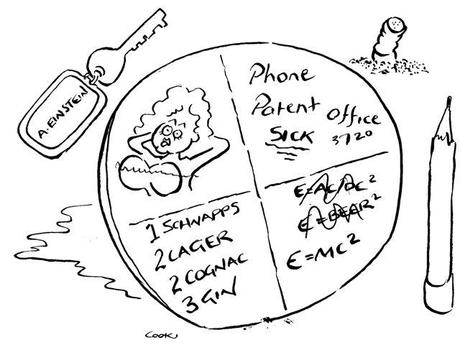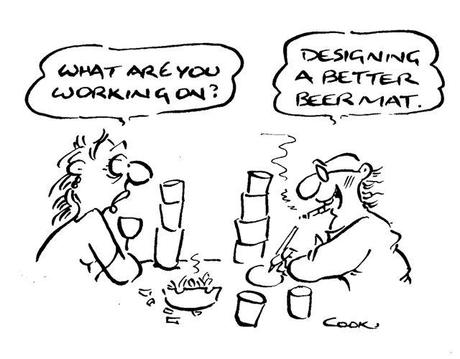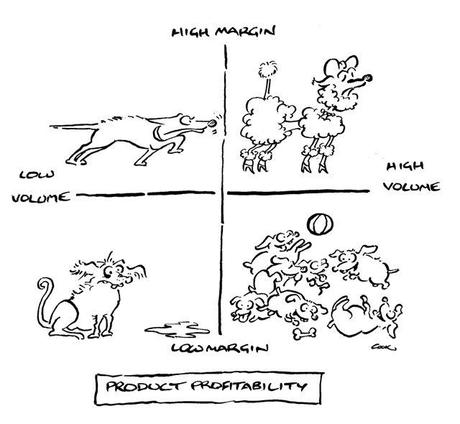 A few ideas can be better than a lot.
A few ideas can be better than a lot.
What was Steve Jobs first strategic call when he returned to Apple in 1997?
According to biographer, Walter Isaacson, he slashed 90% of existing product development. On a whiteboard he drew a simple alternative plan.
It was a two-by-two matrix. The columns were Consumer and Pro; the rows were Desktop and Portable. Four market segments; four products. Everything else was eliminated. Apple was reborn.
Clear and simple product architecture does not signal a lack of strategic sophistication. Rather, it can cut excessive over think and generate clear focus. Someone like Jobs could use his drive and passion to turn that clarity into an incredibly successful business strategy.
Most of us, however, are not Steve Jobs. We can learn from him, but we cannot be him.
 Prompting creative action
Prompting creative action

Most people do not do their best thinking at work. Good ideas are more likely to come in the shower, or on a walk – times when the mind is not so cluttered.
Plenty of great strategies have been worked out on beer mats. Their strength is their clarity, like the mix of simplicity and scribbling that made Steve Job’s matrix a template for product development.
Try it yourself. Instead of waiting for a major review, assess your business or project from some very simple perspectives.
The profitability of products or customers, for example, is never even. If you have a range of both, some will contribute handsomely to profit margin; others won’t. Some may be a net cost.
Are you focusing your efforts on the most profitable product?
For a reality check, try a simple matrix.
Mark the top most profitable; the bottom least profitable. On the right hand side, put high volume; on the left, low volume. Then map your product range.
Do you allocate the greatest amount of resources – finance, people, and inputs – to the products in the top right quadrant? Maybe you’ve got it right, but stand back and look at it. Does it need a rethink, or just a tweak?
What about customers?
Your top customer is not always your best customer. By the time you’ve adjusted for the cost of servicing them or the extent to which you finance their payment terms, margins can get pretty thin.

Is there more margin headroom in selling to other customers? Should you be putting more resources behind servicing them rather than your biggest or dominant customer? Can you also make them “best” customers?
Easiest of all, try 80:20. Put “Effort” on one axis and “Impact” on the other. What’s in the quadrant that produces 80% impact for 20% effort? It’s not just a useful business exercise. Try it on your life.
Matrices come in different shapes and sizes, but they all have the advantage of highlighting different perspectives. The ideas of some of the most influential management thinkers – from Michael Porter to Stephen Covey – can be summarized in four quadrants. It’s a simple tool; one which didn’t do Apple any harm.


